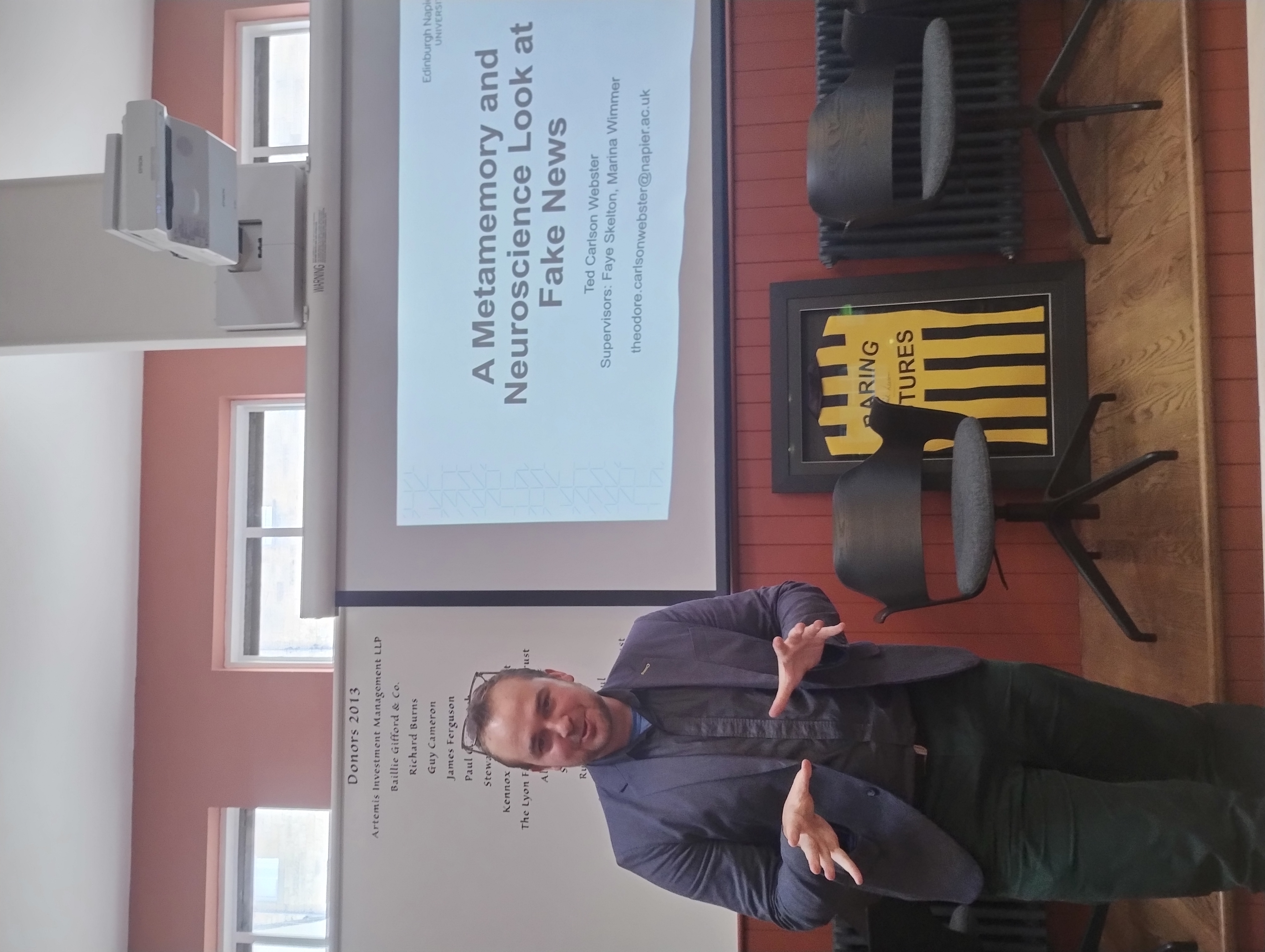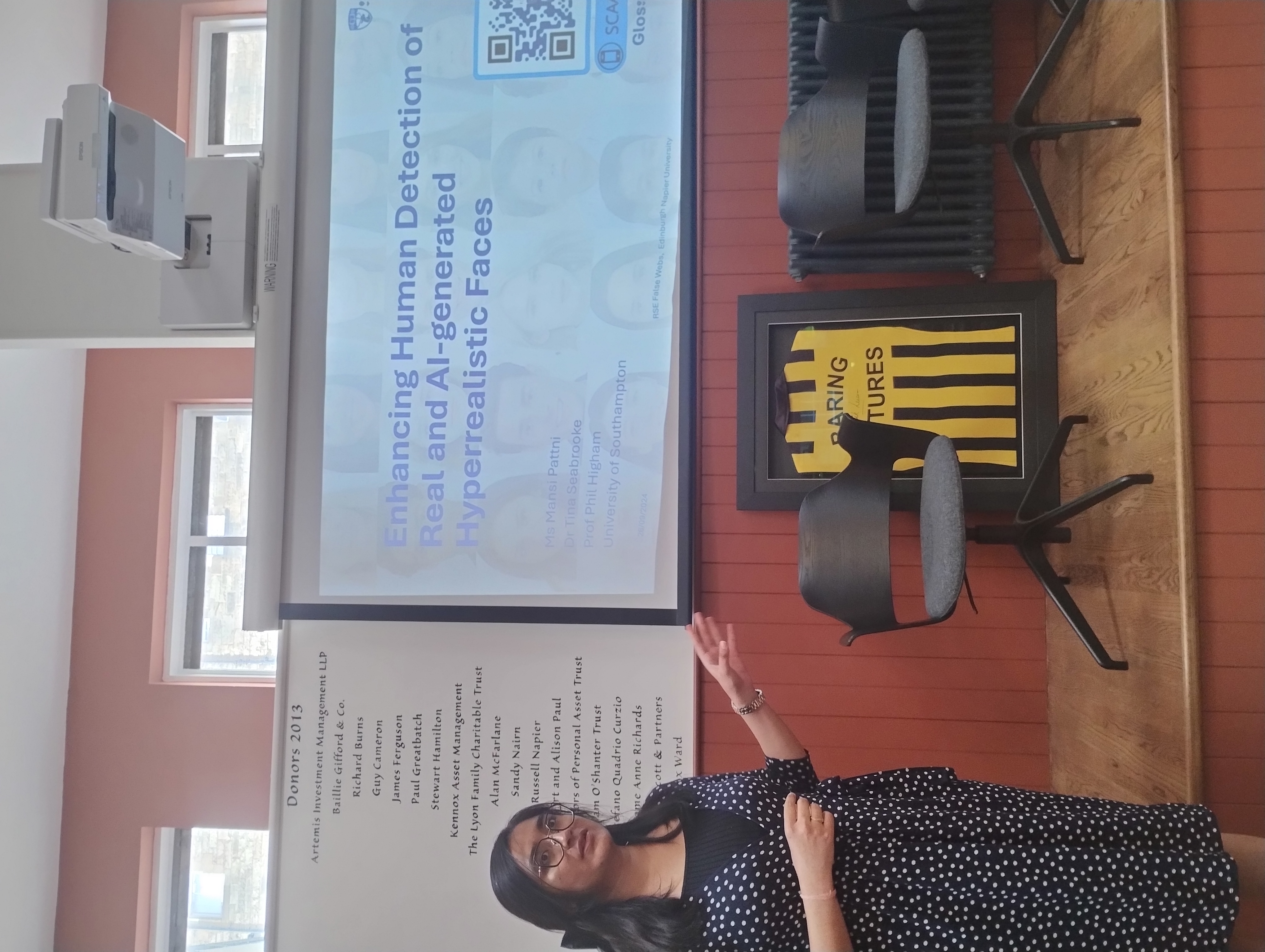The second seminar of the False Webs Network took place on 26 September, 2024 in Edinburgh with five speakers giving talks around the main theme, “Fact Checking and Fake News on Social Media”.
Research from University of Strathclyde about how different people may be more susceptible to fake news started off the day, presented by David Robertson. Anna Talley then presented her PhD research at University of Edinburgh around the history of design of information disorder- showing that this isn’t a new phenomenon, with some suggestions for future system-level changes. Paul Reisthuis, visiting from Maastricht University, closed out the first speaker slot with his research around the Illusory Truth Effect (where statements seem more truthful the more they are repeated, regardless of if they are true or not), where he had found the effect can also be seen with repeated opinions.
In the second slot, University of Southampton PhD candidate Mansi Pattni presented her recent promising work of an intervention designed to help people detect AI generated faces, which should be useful as AI-made falsehoods are being shared more and more often on social media. Ted Webster of Edinburgh Napier closed out the speaking sessions with an update of his first presentation on brain region activations when a fake news warning was present, which showed some possible early evidence of a neuro-cognitive link between the presence of warnings on fake news articles and increased brain activity.
The end of the seminar saw a discussion on our approach to writing our policy paper, which will have recommendations for the Scottish policymakers from across many fields of study.

